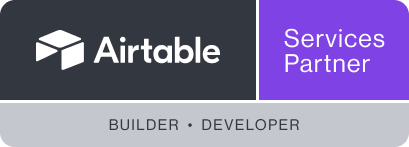FAQ
Frequently asked questions
You can test Asana free of charge with BridgeFlow for 30 days. To do so
all you have to do is fill out this form and we’ll take care of everything else.
The rollout within the company depends on various factors, such as the company’s size, the complexity of workflows, and employee adoption. One possible approach is to start by selecting a small team to test the platform and provide feedback. Afterward, additional departments can be gradually added. It is also important to provide training and training materials to ensure that all employees can use the platform. Regarding the duration of the rollout, it can vary depending on the size and complexity of the company.
For example, a typical Asana rollout for 100 employees takes about 3-6 months, depending on the scope of training, availability, etc. In a smaller company, this can happen more quickly, and Asana can be fully implemented within a few weeks.
Asana is at the core of our work – our philosophy is that every company should use a central work management tool like Asana to control work, processes, projects, and more.
In addition to Asana, we offer complementary tools:
- Make.com – as a no-code/low-code platform to enable cross-tool workflows through APIs.
- Airtable.com – as an app platform to enable complex, database-heavy, and complementary workflows to Asana.
- Microsoft 365 and Google Workspace: We have experts for both office suites and seamlessly integrate them with Asana, etc.
Yes, Make.com is GDPR (General Data Protection Regulation) compliant. You can find more information on that here.
User-Friendly Interface: The platform often provides a user-friendly drag-and-drop interface, allowing users to create workflows without extensive programming knowledge.
Customizable Automation: Users can customize and tailor automation workflows to meet their specific requirements.
Scalability: Make.com enables companies to scale their automation workflows as needed to keep up with growth and demands.
Real-Time Data Integration: Make.com allows real-time integration and synchronization of data between different applications to ensure up-to-date information.
Flexibility and Adaptability: Airtable allows users to create customized databases and workspaces that align with their specific needs and workflows.
Various Field Types: Airtable offers a variety of field types such as text, number, date, attachment, link, and more to effectively store different types of data.
Expandability: The platform provides the option to build custom apps and integrations using the Airtable API to further extend functionality.
Visualization and Reporting: Airtable enables users to visually represent data, create charts, and generate reports to gain insights from the collected information.”
Asana offers various pricing plans that cater to different business requirements and sizes. Here are the key pricing plans for Asana:
Premium: Asana’s Premium plan is priced at €10.99 per user per month when billed annually, and it’s suitable for small teams with lower complexity.
Business: Asana’s Business plan is priced at €24.99 per user per month when billed annually. It’s recommended for most companies with over 10 employees that work on multiple projects and cross-functional teams.
Enterprise: Asana’s Enterprise plan is tailored for large organizations with specific needs. Pricing for this plan is negotiated individually with us. In addition to the features of the Business plan, the Enterprise plan offers advanced security features, enhanced admin capabilities, and priority support.
Make.com offers different versions with varying monthly or annual costs. It depends largely on the plan and the number of ‘operations’ consumed. Consulting on your use cases can be helpful in estimating the final costs. Feel free to contact us.
If you’re looking to purchase Make.com, get in touch with us directly to receive an attractive enterprise offer through BridgeFlow.
Airtable offers various pricing plans to cater to different business needs and sizes. Here are the key pricing plans for Airtable:
Plus: Airtable’s Plus plan is priced at €10 per user per month when billed annually and is suitable for teams looking to create connected applications to manage their own workflows.
Pro: Airtable’s Pro plan is priced at €20 per user per month when billed annually and is designed for cross-team applications, such as between two departments.
Enterprise: Airtable’s Enterprise plan is tailored for large organizations with specific requirements, offering advanced security features and improved admin capabilities. Pricing for this plan is negotiated with Airtable’s sales team. You can find more information here.
Asana and Airtable are both project management tools, but with different focuses and features. Here are some key differences between the two:
Asana is a tool that focuses on managing and organizing tasks, projects, and team workflows. It offers features like task assignments, timelines, calendar views, file attachments, and team communication. It is often used across the entire organization and cross-departmentally.
On the other hand, Airtable is more of a flexible database and collaboration tool that combines spreadsheet-like functionality with a database. It allows the creation of flexible databases that work with relationships and links between data elements. It is frequently used by technical or data-driven teams and can seamlessly integrate with Asana.

Marc-Antonio Allen • Business Development Manager DACH


Newsletter








